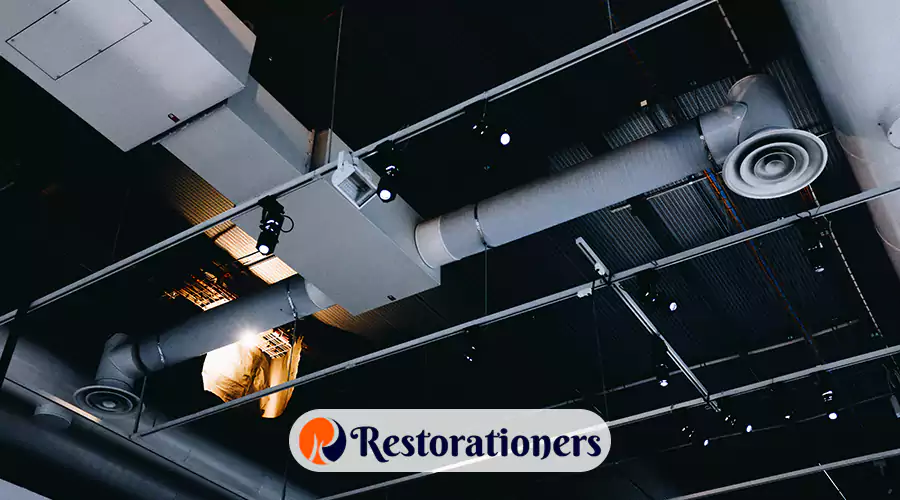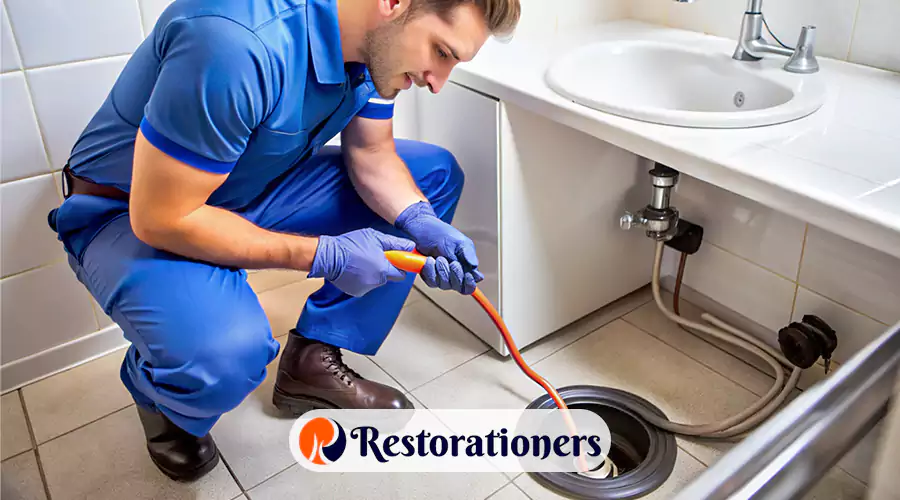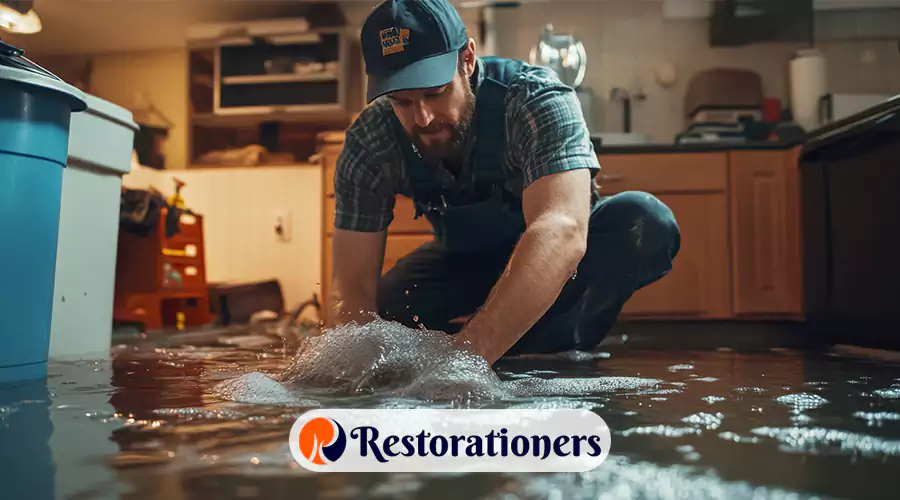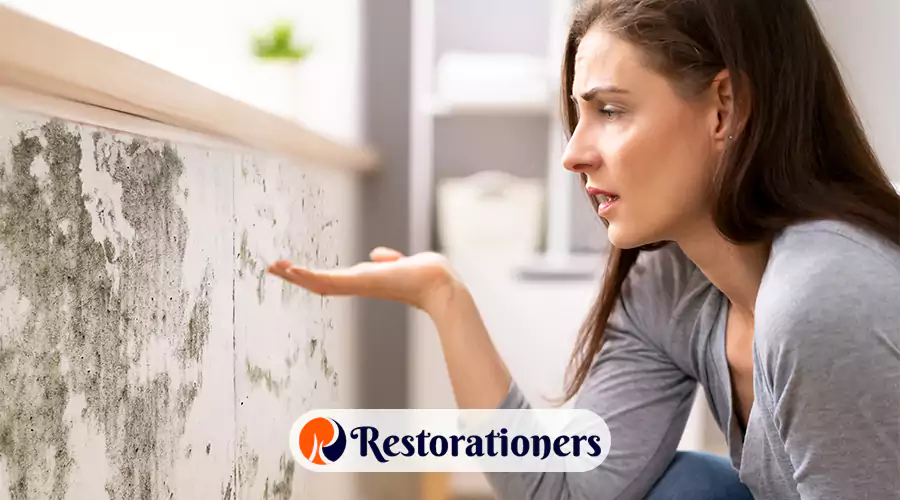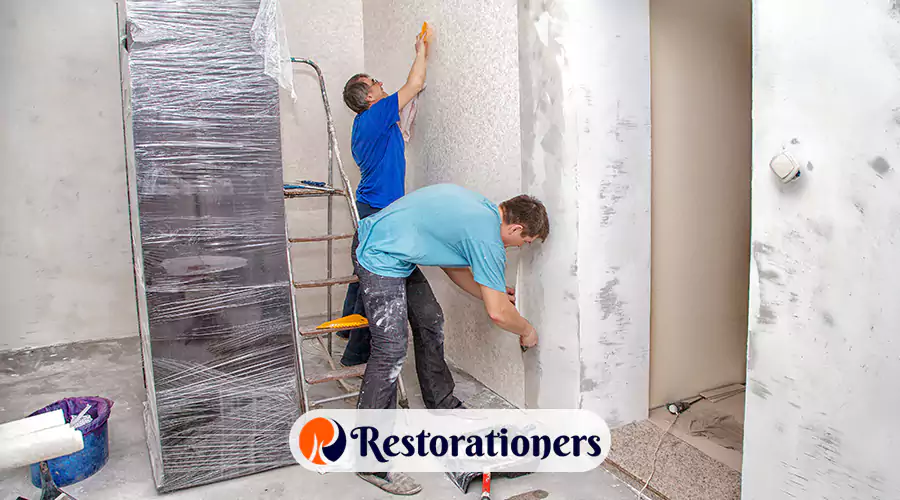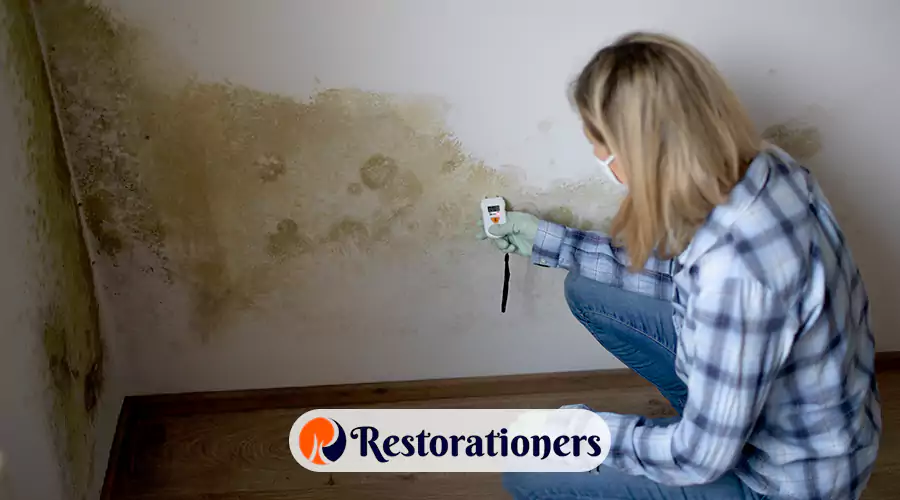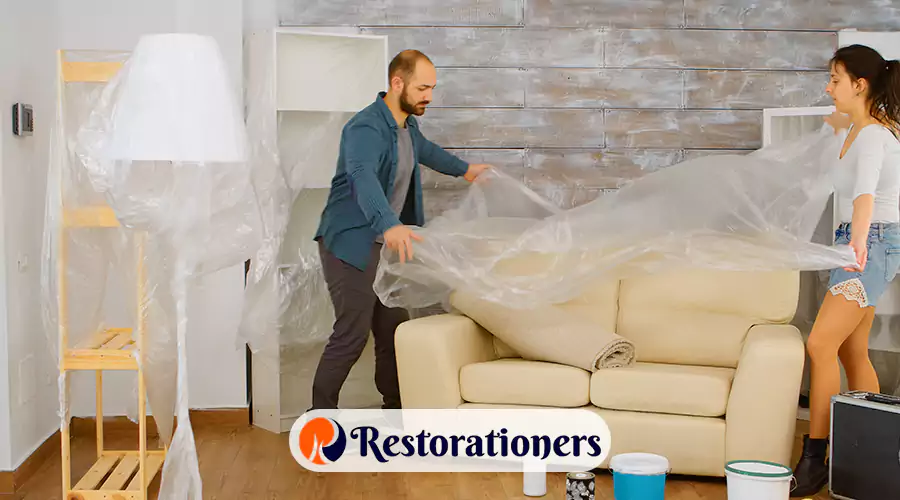When a fire breaks out, what we can see is burnt walls, broken furniture and lingering smells but that is not the whole story. The destruction of HVAC systems by smoke is one of the least recognized implications of smoke. These systems can propagate and keep the propagation of contaminants even after the flames have been put out and the systems are hidden behind walls and ducts.
Being an HVAC and indoor air quality expert, I have observed the effects of smoke damage on health and even the performance of the systems. It is essential to learn the impact of smoke on HVAC units in order to regain safety, productivity, and long-term comfort.
Understanding How Smoke Affects HVAC Systems
Smoke contains microscopic soot, ash and chemicals that enter into ductwork and mechanical parts. An HVAC system normally draws these contaminants deep into the system during a fire and leaves them on coils, filters, and vents. Even when the area is visually cleaned, soot can be left behind in combination with the moisture where the soot can form an environment to grow the mould or cause corrosion.
This residue cannot be removed using normal cleaning techniques. HVAC restoration professionals are certified and apply specialized filtration and deodorization methods to restore the functionality of the system and provide a safe environment to breathe.
The Science behind Smoke Damage
Smoke is a mixture of gases, soot and moisture. When it is attracted into an HVAC system, it cools and condenses and leaves sticky residues on inside surfaces. These residues attach to ducts and coils, to combine with humidity creating a breeding site of mold and bacteria.
Smoke residues can have different impacts on HVAC systems:
| Type of Smoke Residue |
Common Source |
Effect on HVAC System |
| Dry Smoke |
Paper, wood |
Fine soot gets in filters and ducts. |
| Wet Smoke |
Plastics, rubber |
Coils and ducts are covered with sticky residue. |
| Protein Smoke |
Kitchen fires |
Strong odors are generated by invisible residue. |
| Fuel Oil Soot |
Furnace puff-backs |
Severe soot ruins filters and parts. |
Each type requires specialized cleaning and restoration methods reinforcing the need for certified professionals.
The Hidden Dangers in Ventilation Systems
Smoke residue often hides within the ventilation system, unnoticed until odors or dust appear weeks later. Because ducts distribute air throughout a building, any contamination within them circulates harmful particles into every room.
This can aggravate allergies, trigger asthma, and significantly reduce indoor air quality. In severe cases, clogged filters, melted wiring, or corroded coils can compromise both efficiency and safety. Early inspection and thorough air duct cleaning are essential to prevent long-term issues.
Key HVAC Components Affected by Smoke
| Component |
What Happens |
Why It Matters for Air Quality |
| Filters |
Soot and particles block filters and absorb acid residue. |
Less filtration means that the contaminants will recirculate. |
| Ductwork |
A dirty, greasy soot lies on the inside. |
Off-gas residues and recycles particles. |
| Coils & Blower |
Buildup of coils and blower housings. |
Slows heat transfer, air circulation, and system efficiency. |
| Vents & Registers |
Dust collects in ventilation and grilles. |
Produces emitted odors and deteriorates air quality. |
| Ventilation Pathways |
Smoke covers the whole route of the air. |
Air pollution is spread to the system. |
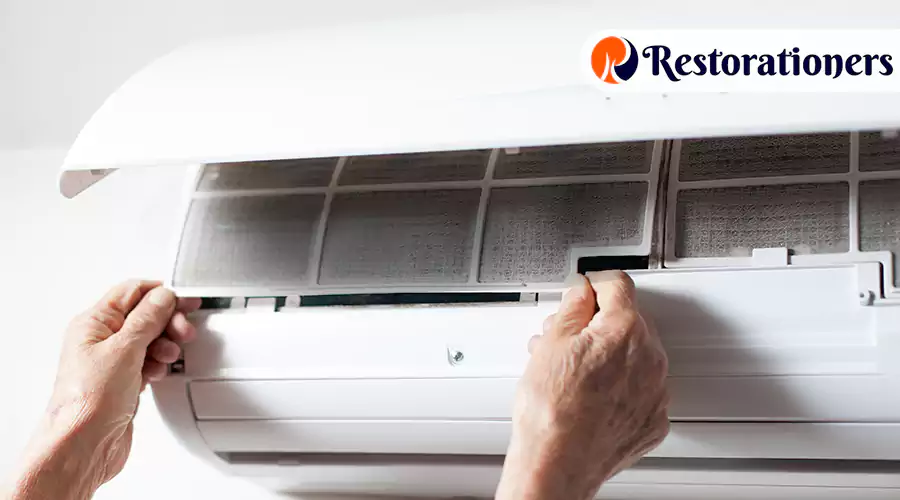
Step-by-Step HVAC Smoke Damage Cleanup & Restoration
- Immediate System Shutdown
Switch off HVAC device as soon as a fire takes place. Its operation disperses soot more into ducts and coils.
- Comprehensive Inspection
Technicians certified to inspect filters, coils, ductwork, insulation, and wiring inspect these parts to determine the presence of contamination or corrosion with special sensors and tools.
- Deep Cleaning and Deodorization.
Soot and residue is removed using HEPA-filtered vacuums, rotary brushes, and chemical sponges. Persistent odors are neutralized by either ozone or hydroxyl.
- Air Purification and Replacement of Filters.
The filters, and in particular the HEPA-grade filters, must all be replaced in order to collect the remaining dust particles and avoid recontamination. Additional air scrubbers can improve the safety.
- Duct Sealing & Maintenance
Ducts are sanitized and closed after cleaning to avoid contamination in the future. Planned maintenance keeps the system efficient and safe.
Post-Fire HVAC Maintenance
HVAC maintenance must be conducted after any smoke occurrence. The accumulation of soot may harm the motors, corrode the wiring, and limit the moving parts. Professional cleaning and early detection prevent significant repairs. Technicians clean and replace filters, check the refrigerant, electrical systems, and airflow balance as well.
Extensive cleaning up after the smoke damage does not only restore the performance of the systems but also offers long-term safety. Airborne particles may be present in the entire duct system even when the fire was in a different area within the property, and so a thorough cleaning is required.
Restoring & Maintaining Indoor Air Quality
Restoring indoor air quality after a fire requires continuous care. Even after professional cleaning, regular upkeep is vital for lasting safety and comfort.
Key recommendations:
- Change filters frequently to ensure that air moves and new particles are caught.
- Arrange regular maintenance of HVAC to identify latent damage.
- Install an air purification system like the HEPA filters, UV-C lights, or ionizers to get rid of the remnants of air pollution.
- Periodically check the indoor air quality to maintain the safety in the long run.
Long-Term Prevention & Air Quality Improvement
Preventive action plays a major role in maintaining and improving indoor air quality after a smoke event. Implement the following practices:
- Install advanced filtration systems like HEPA or activated carbon filters for enhanced purification.
- Seal ductwork leaks to prevent infiltration of external smoke or pollutants.
- Schedule professional duct cleaning at least annually, especially in smoke-prone regions.
- Use portable air purifiers in high-use areas for continuous air quality protection.
- Upgrade ventilation systems to include modern filtration and humidity control features.
Taking these proactive steps enhances HVAC efficiency while reducing exposure to hazardous pollutants.
The Importance of Professional HVAC Smoke Cleaning
DIY home cleaning can hardly remove the toxins that are embedded. HVAC restoration experts are certified professionals with the equipment and knowledge to clean, deodorize, and test your system completely. Their efforts guarantee that airflow is good, contaminants are eliminated, and corrosion/mildew does not occur again.
Professional hiring will ensure that your HVAC system not only breathes clean air but also gets a renewed performance, safety, and performance.
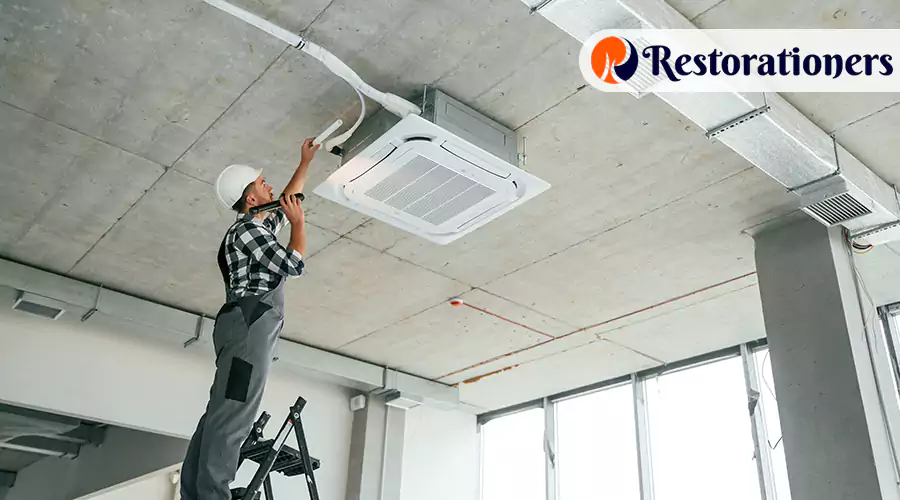
Final Thoughts
One of the least taken into consideration risks following a fire is smoke infiltration. It can make your HVAC system, which is the mechanism that is supposed to provide clean air, a source of constant contamination.
Timely check-ups, cleanliness, and preventive maintenance would be necessary to revive the quality of air and comfort. Early treatment of smoke damage saves unnecessary costs in repair and also protects the health of the entire family in your home or business premises.
 Damage-Specific RestorationGeneral Restoration ServicesSpecialized RestorationCleanup & Removal ServicesBack to Main MenuDamage-Specific RestorationWater Mitigation Water Damage Flood Damage Basement Flood Clean Up Storm Damage Restoration Hurricane Damage Restoration Winter Storm Damage Restoration Water Leak Detection Services Fire Damage Smoke Damage Restoration Soot Removal Mold Damage Mold Remediation Biohazard Cleanup Earthquake Restoration Mudslide Damage Restoration Disaster RestorationBack to Main MenuGeneral Restoration ServicesEmergency Restoration Services Commercial Restoration Services Residential Restoration Services Advanced Restoration Building Restoration House Restoration Restoration Contractors Structural Restoration 24 Hour Emergency Water Damage RestorationBack to Main MenuSpecialized RestorationDocument Restoration Hardwood Floor Refinishing Marble Restoration Kitchen Restoration Bathroom Restoration Roof Restoration Wood Restoration Wood Floor Restoration Tile Restoration Concrete Restoration Foundation RestorationBack to Main MenuCleanup & Removal ServicesOdor Removal Services Air Duct Cleaning Hazardous Waste Disposal Asbestos Abatement Demolition Contractors Emergency Board Up
Damage-Specific RestorationGeneral Restoration ServicesSpecialized RestorationCleanup & Removal ServicesBack to Main MenuDamage-Specific RestorationWater Mitigation Water Damage Flood Damage Basement Flood Clean Up Storm Damage Restoration Hurricane Damage Restoration Winter Storm Damage Restoration Water Leak Detection Services Fire Damage Smoke Damage Restoration Soot Removal Mold Damage Mold Remediation Biohazard Cleanup Earthquake Restoration Mudslide Damage Restoration Disaster RestorationBack to Main MenuGeneral Restoration ServicesEmergency Restoration Services Commercial Restoration Services Residential Restoration Services Advanced Restoration Building Restoration House Restoration Restoration Contractors Structural Restoration 24 Hour Emergency Water Damage RestorationBack to Main MenuSpecialized RestorationDocument Restoration Hardwood Floor Refinishing Marble Restoration Kitchen Restoration Bathroom Restoration Roof Restoration Wood Restoration Wood Floor Restoration Tile Restoration Concrete Restoration Foundation RestorationBack to Main MenuCleanup & Removal ServicesOdor Removal Services Air Duct Cleaning Hazardous Waste Disposal Asbestos Abatement Demolition Contractors Emergency Board Up